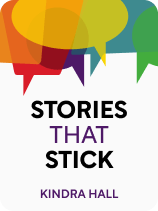

This article is an excerpt from the Shortform book guide to "Stories That Stick" by Kindra Hall. Shortform has the world's best summaries and analyses of books you should be reading.
Like this article? Sign up for a free trial here.
What is a Founder Story? How does an origin story help you attract people to your business?
Every business has an origin story. According to Kindra Hall’s book Stories That Stick, this is the story of how your company began and the person behind it all.
Continue reading to learn how to use a Founder Story to help you stand out from competitive businesses.
Your Business’s Origin Story
The Founder Story is useful when you’re courting investors, attracting new customers, or recruiting team members to your organization. According to Hall, the purpose of the Founder Story is to show what makes you stand out from the competition. In this case, you’re not selling a product, you’re selling the person behind the company.
(Shortform note: According to Jeffrey Gitomer, author of the Little Red Book of Selling, the founder isn’t the only one in the company whose story matters. In his advice to salespeople, he argues that your customers “buy” you before they buy what you’re selling. For example, they buy your knowledge, your expertise, your humor, or your character. Therefore, he recommends that anyone in sales, not just the founder, develop a story that communicates their personal brand.)
The Founder Story is more prescriptive than the other core stories. Your character must be the founder and the story should convey the passion and perseverance of that person. You want your audience to walk away impressed by how hard the founder worked to get where they are.
(Shortform note: The Founder Story, as described by Hall, closely aligns with the narrative archetype of the hero’s journey. Both narratives follow a similar structure or sequence of events in which the protagonist faces a challenge or obstacle that sets them on a journey of discovery and transformation. Along the way, they encounter allies and enemies, overcome obstacles, and face setbacks and challenges. Eventually, they reach a point of crisis or climax where they must confront their fears and overcome the final obstacle to achieve their goal.)
Procter & Gamble (P&G) is an example of a company that uses its Founder Story to inspire new employees to become more invested in the company and immersed in its culture. For instance, new P&G hires read “The Book,” which describes the company’s history and the founders’ core values, and new employees also take time to visit a life-size marble sculpture of William Cooper Procter, who was responsible for growing the Procter family’s business.
Hall emphasizes that you don’t have to be the founder to tell the Founder Story. If you don’t know your company’s founding story, ask! Then, as you retell it, talk about the first time you heard the founder’s story and how it impacted you. The founder’s story is valuable, regardless of who’s telling it.
| When to Avoid a Founder’s Story There are times when the Founder’s Story isn’t worth telling. For instance, if a founder is embroiled in controversy or hasn’t delivered on promises, the company is better off focusing on telling a story that doesn’t position the founder as the protagonist. For example, Uber couldn’t use this tactic when its founder Travis Kalanick faced a series of scandals related to the company’s workplace culture, treatment of drivers, and business practices. Kalanick was forced to resign in 2017 following allegations of sexual harassment and discrimination. Instead, Uber chose to highlight the cultural shifts ushered in by the new CEO, who has made headlines for going undercover as an Uber driver in order to better understand drivers’ experience. |

———End of Preview———
Like what you just read? Read the rest of the world's best book summary and analysis of Kindra Hall's "Stories That Stick" at Shortform.
Here's what you'll find in our full Stories That Stick summary:
- Why stories are probably the answer to most of your business problems
- How to harness the power of storytelling to connect with your audience
- How to integrate storytelling into your marketing strategy






